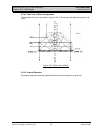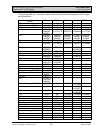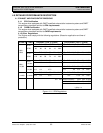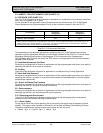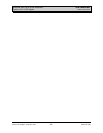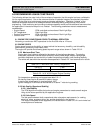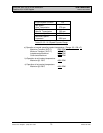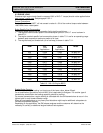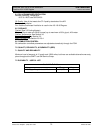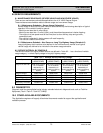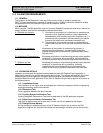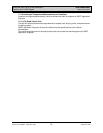
ENGINE APPLICATION MANUAL GM Powertrain
Gasoline 4.3L V6 90 Degree Revised: 08/15/2000
File: c:\data\manuales\v6-truck\am43v6#3.doc
Contact:Luis Nespolo - (248) 857-1558 Printed: 8/15/00
69
6.0 RECOMMENDED USAGE CONSTRAINTS
The following defines the outer limits of the envelope of operation that this engine has been validated to
(for its original application). Due to the extreme variation of potential usages, the attached information
should only be used as a guide toward pursuing alternate applications. Operation “outside” of the
described envelope should not be attempted without extensive testing and guidance from product
engineering. Data monitoring and providing shutdown capability would provide additional assurance that
the application’s intended envelope is not violated. The following parameters warrant measurement
consideration.
• Engine Speed -PCM controlled and monitored- Dash Light Sign
• Oil Temperature -Dash Light Sign
• Coolant Temperature -PCM controlled and monitored- Dash Light Sign
• Coolant Level -Dash Light Sign
6.1 ENGINE PRE-CONDITIONING PRIOR TO NORMAL OPERATION
No towing or continuous WOT operations for the first 500 miles or 12 hours.
6.2 ENGINE SPEED
Engine speed range has the ability to impact vehicle fuel economy, durability, and driveability
performance, particularly under heavy load.
The engine will provide the following speed dynamic range values shown in Table 2.2.3-II.
6.2.2 Maximum Start Time.
Engine start time is directly affected by the design of the starting subsystem. The starting
subsystem parameters include starter efficiency, battery cable length, battery cable gauge,
corrosion resistance and conductivity of cable connectors and battery cold cranking capacity.
The vehicle will start within the maximum times specified in Table 6.2.2 -I and continue to run at idle.
Table 6.2.2 -I 4.3L V6 90 Degree Engine Cranking
For temperature operating environment see table 5.2.1-I.
All starting times require at least 80% battery charge.
A starting aid (block heater) is required below -20°F.
Ignition voltage to PCM must be maintained at or above 7 volts during cranking.
6.2.3 Idle Quality (Speed and Stability)
6.2.3.1 Idle Stability
The PCM algorithm modifies fuel pulse and engine parameters to create smooth engine
idling at the values specified by the application engineer.
6.2.3.2 Idle Speed
The idle speed selected shall comprehend other subsystem requirements (i.e. cooling,
electrical, noise, accessory drive, etc. and be developed in the vehicle).
The engine idle speed will be targeted at the values shown in table 6.2.3.2-I to minimize fuel
consumption and emissions.
Table 6.2.2-I Maximum Start Time by Temperature
120 to 0 F 1 sec.
0 to -20 F 2 sec.



